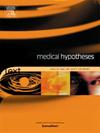全身振动通过抗炎作用减轻抑郁症状
IF 0.8
4区 医学
Q3 MEDICINE, RESEARCH & EXPERIMENTAL
引用次数: 0
摘要
重度抑郁症(MDD)的传统治疗方法往往疗效有限,并可能伴有副作用,这促使人们需要替代策略。全身振动(WBV)是一种被动的身体干预,具有抗抑郁潜力,尽管其机制尚不完全清楚。我们假设WBV改善抑郁症状的机制部分是通过其抗炎作用。炎症通过多种机制导致抑郁症状,包括VTA-NAc回路中多巴胺能信号的破坏、单胺传递的损害以及通过犬尿氨酸途径诱导神经毒性,从而导致喹啉酸积累、氧化应激和突触功能障碍。通过抑制促炎细胞因子和增强抗炎介质,WBV可能有助于逆转这些炎症诱导的神经生物学改变,最终减轻抑郁症状。这一假设可以通过慢性不可预测轻度应激(CUMS)大鼠模型进行验证,将动物随机分配到对照组、应激组和应激+ WBV干预组。在多个时间点评估行为表现、细胞因子水平、中枢血清素和脑源性神经营养因子(BDNF)等突触标志物,以评估治疗效果。这些发现将支持WBV作为一种安全,低屏障,非药物治疗抑郁症的潜力,特别是与炎症相关的形式,以及更广泛的炎症条件,特别是在无法耐受药物或从事传统运动的个体。本文章由计算机程序翻译,如有差异,请以英文原文为准。
Whole body vibration alleviates depressive symptoms through its anti-inflammatory effects
Conventional treatments for major depressive disorder (MDD) often show limited efficacy and may be accompanied by side effects, prompting the need for alternative strategies. Whole-body vibration (WBV) is a passive physical intervention with emerging evidence of antidepressant potential, though its mechanisms remain incompletely understood. We hypothesize that the mechanism by which WBV improves depressive symptoms is partly through its anti-inflammatory effects. Inflammation contributes to depressive symptoms through multiple mechanisms, including disruption of dopaminergic signaling in the VTA–NAc circuit, impairment of monoamine transmission, and induction of neurotoxicity via the kynurenine pathway, which leads to quinolinic acid accumulation, oxidative stress, and synaptic dysfunction. By suppressing pro-inflammatory cytokines and enhancing anti-inflammatory mediators, WBV may help reverse these inflammation-induced neurobiological alterations and ultimately alleviate depressive symptoms. This hypothesis could be tested using chronic unpredictable mild stress (CUMS) rat models, with animals randomly assigned to control, stress, and stress + WBV intervention groups. Behavioral performance, cytokine levels, central serotonin, and synaptic markers such as brain-derived neurotrophic factor (BDNF) would be assessed at multiple timepoints to evaluate treatment effects. Such findings would support the therapeutic potential of WBV as a safe, low-barrier, non-pharmacological strategy for both depression—particularly forms associated with inflammation—and broader inflammatory conditions, especially in individuals unable to tolerate medication or engage in conventional exercise.
求助全文
通过发布文献求助,成功后即可免费获取论文全文。
去求助
来源期刊

Medical hypotheses
医学-医学:研究与实验
CiteScore
10.60
自引率
2.10%
发文量
167
审稿时长
60 days
期刊介绍:
Medical Hypotheses is a forum for ideas in medicine and related biomedical sciences. It will publish interesting and important theoretical papers that foster the diversity and debate upon which the scientific process thrives. The Aims and Scope of Medical Hypotheses are no different now from what was proposed by the founder of the journal, the late Dr David Horrobin. In his introduction to the first issue of the Journal, he asks ''what sorts of papers will be published in Medical Hypotheses? and goes on to answer ''Medical Hypotheses will publish papers which describe theories, ideas which have a great deal of observational support and some hypotheses where experimental support is yet fragmentary''. (Horrobin DF, 1975 Ideas in Biomedical Science: Reasons for the foundation of Medical Hypotheses. Medical Hypotheses Volume 1, Issue 1, January-February 1975, Pages 1-2.). Medical Hypotheses was therefore launched, and still exists today, to give novel, radical new ideas and speculations in medicine open-minded consideration, opening the field to radical hypotheses which would be rejected by most conventional journals. Papers in Medical Hypotheses take a standard scientific form in terms of style, structure and referencing. The journal therefore constitutes a bridge between cutting-edge theory and the mainstream of medical and scientific communication, which ideas must eventually enter if they are to be critiqued and tested against observations.
 求助内容:
求助内容: 应助结果提醒方式:
应助结果提醒方式:


